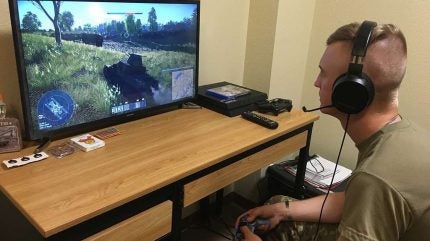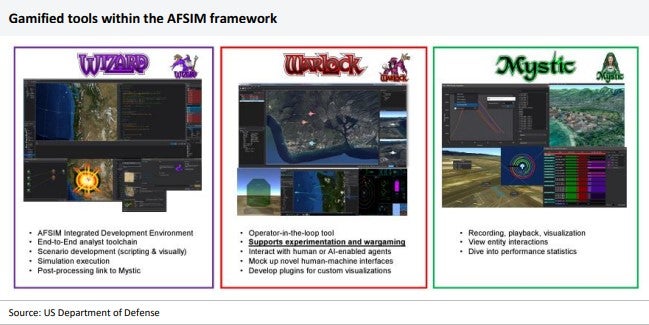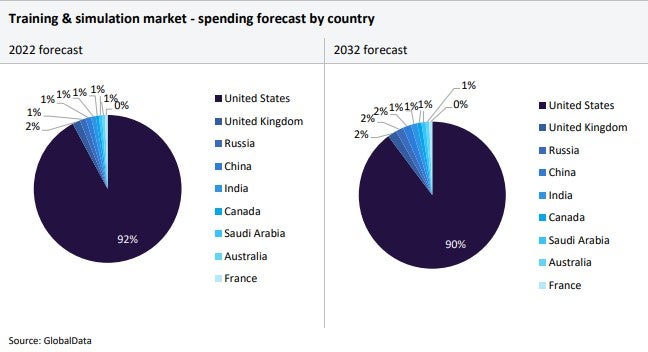
The US military is projected to invest more than $26bn annually into gamification and simulation training by 2028, according to a new report.
Militaries worldwide are increasingly drawing on gamification for both training and recruitment, with mixed responses on its effectiveness, capacity for desensitisation and ethicality.

Discover B2B Marketing That Performs
Combine business intelligence and editorial excellence to reach engaged professionals across 36 leading media platforms.
Generally, it involves military personnel acquiring new skills or knowledge, infused with game-like elements such as points, leaderboards or badges.
Some defence analysts have said gamified training simply involves playing video games which the US military have scooped out of the public sphere to use as ‘simulators’, such as Marine Doom.

Most follow the AFSIM (Advanced Framework for Simulation, Integration and Modelling) programme, launched by the US Air Force but derived from a similar Boeing project.
The US leads the drive. According to GlobalData’s Gamification and Simulation Training in Defence report, the US military accounted for 92% of global expenditures in the gamification defence market in 2022 – approximately $25bn.

US Tariffs are shifting - will you react or anticipate?
Don’t let policy changes catch you off guard. Stay proactive with real-time data and expert analysis.
By GlobalData
As concerns over heightened geopolitical tensions and deteriorating security continue to stimulate investment, particularly in Europe and Asia-Pacific, other nations have begun to leverage gamified training and simulation capabilities.
The report also projects that the wider gamification defence market will grow by 2.6% CAGR from 2022 to 2032, reaching a total value of $37.5bn.
Unethical and underage recruitment? Concerns mount
Other US Army branches have outlined the perceived benefits of gamified training for young recruits.
The US Navy, for instance, released a paper in 2022 claiming that video games help sailors and marines process information quicker and boost neuroplasticity. Both the US Navy and Marine Corps have been using video games, simulators and virtual reality for years.
Others remain sceptical – particularly regarding the use of video games for recruitment of potential prospects.
As recently as 2020, the US military controversially used a channel on Twitch, a platform often used to stream video game content, to direct users to a military recruitment page.
Democrat Representative Alexandria Ocasio-Cortez proposed a ban on the Twitch recruitment form, which was rejected, until the Amazon-owned streaming platform banned the US military’s fake ‘giveaway’ promotion.
The US Army branches have their own esports teams, notably including the Marine Corps, which has partnered with gaming influencers including TheWarOwl and Melonie Mac.
The US military also has gaming content across Twitch, YouTube, Instagram and Discord, and it has released its own video games such as America’s Army.
While users of social media sites and online gaming communities are meant to be at least 13, such age limitations are easy to bypass.
The US military doesn’t officially recruit anyone under the age of 17, but the recruitment drive often involves interaction with minors.
In turn, this begs a key question: how does the US Army balance its need to boost reserve numbers, often advertising itself to young adults for whom military service is sometimes the best (or only) option, with the use of gamification for recruitment and training?



